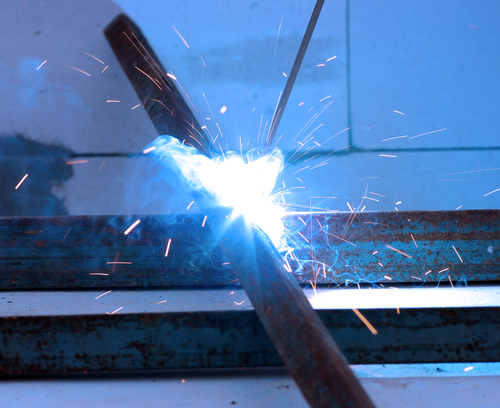The more your workers know about arc flash hazards and precautions, the safer they will be.
 |
An arc flash is a short circuit through the air. In an arc flash incident, an enormous amount of concentrated radiant energy explodes outward from electrical equipment, creating:
- Pressure waves that can damage hearing, fracture ribs, collapse lungs, and knock a worker off a ladder or blow him or her across a room
- Pressure waves that can send loose material like pieces of damaged equipment, tools, and other objects flying through the air at speeds in excess of 700 miles per hour
- A high-intensity flash that can damage eyesight and leave a person blind
- A superheated ball of gas with temperatures in excess of 5,000 degrees that can ignite clothing and cause serious burns over much of the body
Workers have been injured even though they were 10 feet away from the arc center. Furthermore, electrical arc flash hazards do not occur only in the presence of high voltage sources. In fact, locations consisting of many low voltage equipment sources account for the most arc flash incidents.
Each year more than 2,000 workers are treated in burn centers with severe arc flash injuries.
Great news! BLR’s renowned Safety.BLR.com® website now has even more time-saving features. Take our no-cost site tour! Or better yet, try it at no cost or obligation for a full 2 weeks.
Causes
Arc flash occurs when electrical current flows between two or more separated energized conducting surfaces. Common causes of arc flash include:
- Insulation failure
- Buildup of dust, impurities, and corrosion on insulating surfaces, which can provide a path for current
- Equipment failure due to use of substandard parts, improper installation, or even normal wear and tear
- Birds, bees, and rodents snapping leads at connections
- Human error, including dropped tools, accidental contact with electrical systems, and improper work procedures
Applicable Rules
Because of the serious risks associated with arc flash, safety standards have been established to protect workers.
- OSHA regulations require the use of safety signs, symbols, or accident prevention tags to warn employees about electrical hazards that may place them in danger.
- A National Fire Protection Association standard (NFPA 70E) recommend that employers perform an arc flash hazard analysis before allowing employees to work on energized equipment. Although OSHA does not enforce this standard, the agency considers it a recognized industry practice, and OSHA field inspectors may use it as a reference.
- The NFPA standard also recommends PPE and clothing to protect workers as well as addresses the issue of safe flash protection boundaries designed to restrict entry into areas where are flash hazards exist.
Your one-stop safety management resource, available 24/7. Go here to take a no-cost site tour or here to try it in your own office!
In addition, Standard 1584, Guide for Performing Arc Flash Hazard calculations, published by the Institute of Electrical and Electronic Engineers (IEEE), helps you calculate the hazards of arc flash in different types of equipment in various power systems.
